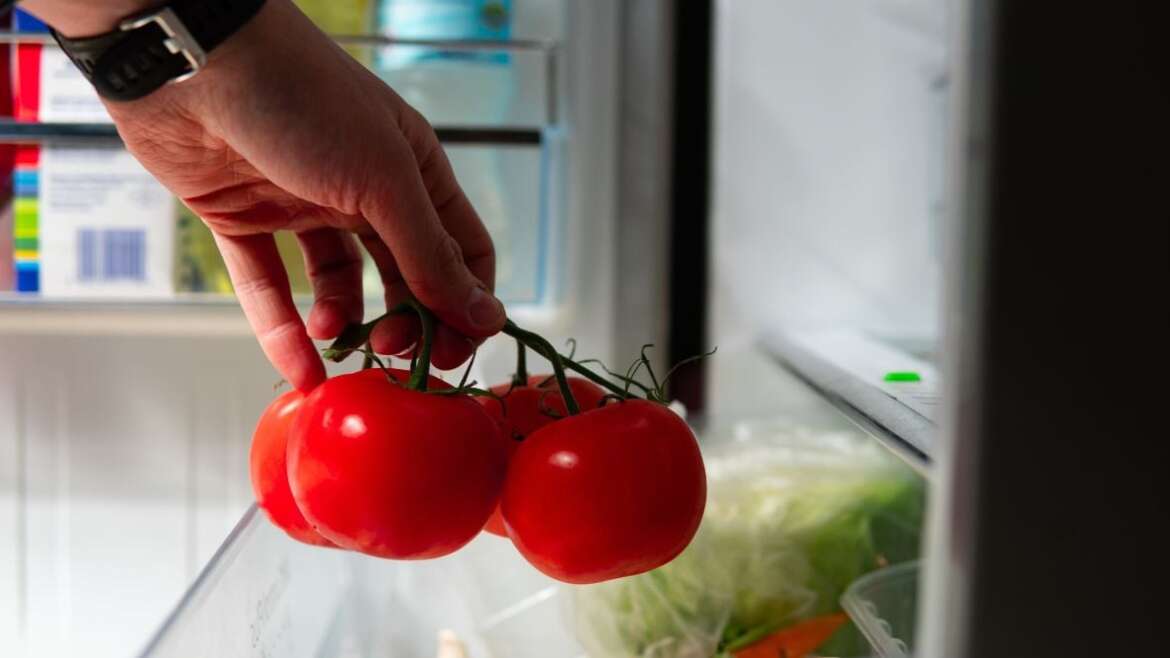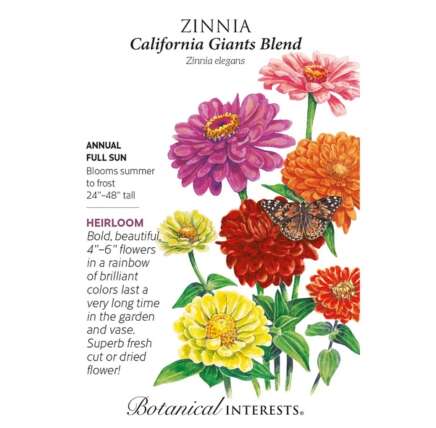Tomato refrigeration is a surprisingly controversial topic. Chefs, farmers, and foodies will aggressively insist that you should never ever refrigerate your tomatoes! They say it completely ruins the flavor and texture.
But what if this is not always the case? Tomato flavor can depend more on proper ripeness and room-temperature consumption than refrigerated storage.
Let’s dig into the nuances of whether or not you should refrigerate these iconic garden fruits.
The Short Answer
It is perfectly fine to refrigerate vine-ripened tomatoes to prolong their storage life. If you have too many ripe fruits ready in the garden, it is better to harvest them and put them in the fridge to prevent over-ripening.
Refrigeration won’t harm the flavor of a ripe tomato. It can actually preserve the sugar content and aroma, compared to the excessive acidity and “off” flavor of an over-ripened fruit sitting on the counter.
However, many taste trials indicate that enjoying the tomato at room temperature can enhance the culinary experience. For optimal flavor and texture, refrigerate your fully ripe harvests until you are ready to eat them, then bring them back to room temperature and sprinkle with salt before enjoying.
Do not put under-ripe or green fruits in the fridge, because this will halt the ripening process. You may be disappointed to find that the fruits remain green and hard even one to two weeks later.
The Long Answer
The effects of coldness can be concerning for various fruits and vegetables.
Most of us have been told never to put our tomatoes in the fridge. It turns out that this is a myth! If you have two fully ripened fruits and you put one in the fridge, it will taste the same as the unrefrigerated counterpart.
The key caveat here is ripeness. There should be no degradation in flavor or texture if the tomato is already ripe.
Taste trials with many varieties and chefs confirm this assertion. Intriguingly, many taste testers even prefer refrigerated fruit. This is because once a tomato is fully ripe, it begins to degrade. Imagine a bell curve of ripeness.
Once the fruit hits its peak, its optimal flavor and texture start going downhill. Refrigeration preserves and prolongs the peak flavor by halting the ripening process at a lower temperature.
However, an unripe tomato will not ripen in the fridge. Ethylene is the plant hormone that affects plant ripening. Research shows that ethylene production is dramatically reduced at low temperatures.
So if you put an unripened fruit in the fridge, it will likely stop ripening. When you pull it out to eat, it may lack sweetness or flavor.
Benefits of Refrigeration
 Placing fruits in the fridge can help extend freshness.
Placing fruits in the fridge can help extend freshness.
If your tomato is ready to eat and you’re hungry to enjoy it, just eat it right away! But if you have an overload of ripe fruits and you need to preserve some of them, refrigeration has many benefits.
Fridge storage can:
- Preserve the flavor of fully ripe fruits.
- Prevent over-ripening and weird “off” flavors.
- Ensure quality texture (prevent mushiness).
- Prevent fruits from rotting on your countertop.
- Double or triple overall storage time.
The great thing about refrigeration is that you can stop it whenever you like. Many people prefer to pull their tomatoes out of the fridge before enjoying them.
Simply leave the tomato on the counter for an hour or so before eating. This will bring it back to room temperature, so you can taste all the delicious flavors without the distraction of cold fruit.
Drawbacks of Refrigeration
 Extremely cold temperatures can stop the ripening process.
Extremely cold temperatures can stop the ripening process.
The cons of refrigeration primarily apply to unripened harvests. If you put an under-ripe or unripe fruit in the fridge, the ripening process is mostly halted. The plant hormone ethylene is barely produced at low temperatures.
This means that a partially green tomato will stay partially green in the fridge. This can be disappointing when you go to pull it out to eat, with the expectation that it will be riper than before.
In summary, the main drawbacks of using the fridge include:
- Under-ripe or unripe fruits will remain under-ripe.
- Ethylene production stops.
- Fruits stay green.
- Sugars stop concentrating.
The most notable thing we’ve discovered in our backyard taste trials is—you have nothing to lose by refrigerating fully vine-ripened fruit! The negatives of refrigeration only apply to under-ripe fruits. The partially green guys should definitely be left on the countertop.
How Tomatoes Ripen
 Keeping this type of fruit on the vine to ripen is often preferred.
Keeping this type of fruit on the vine to ripen is often preferred.
A deeper understanding of tomato ripening is helpful for rationalizing the refrigeration phenomenon. Imagine a tomato’s ripeness as a bell curve. The best flavor and sweetness are at the top of the curve.
If you eat the fruit on its way up the curve, it won’t be very sweet or balanced. But if you eat it on the downhill half of the curve, it could have funky acidity due to over-ripeness.
Vine-ripened tomatoes are famously better than their grocery store counterparts. Most found in the supermarket are harvested fully green, transported thousands of miles, and then sprayed with ethylene to ripen on the shelves. In contrast, garden-grown crops typically turn fully red (or pink, orange, or purple) on the vine.
But most gardeners are unaware of this secret: You don’t have to leave the fruit on the vine until it turns 100% colored. A tomato is still technically vine-ripened if you harvest it at 40-60% color change. This is called the “breaker stage.”
Breaker Stage
 The breaker stage happens when the color slowly changes, leading to a bright red.
The breaker stage happens when the color slowly changes, leading to a bright red.
As the color “breaks” and fruit ripening begins, the tomato actually has all of the flavor compounds and sugars it needs to ripen. The plant is no longer sending nutrients through the fruit’s stem, so leaving it in place doesn’t have a major advantage.
On the contrary, leaving ripe fruits on the vine can present more issues with pests, diseases, or over-ripening. Birds and bugs tend to attack bright, fully ripened fruits. Tomatoes can also quickly over-ripen and turn mushy or overly soft if they are left to hang in the garden.
Harvest Hack
 Timing can be crucial when harvesting.
Timing can be crucial when harvesting.
Harvesting sooner can be very beneficial. Remember, a tomato harvested at the breaker stage is still technically vine-ripened. It does not have to change color 100% on the plant to retain the amazing sweetness and complex flavor.
If you want to prolong your tomato storage time and enhance the quality, try these simple steps:
- Cut the fruit from the vine at the breaker stage (40-60% color change).
- Bring it inside to ripen on your countertop.
- Once the fruit is 90-95% colored, put it in the refrigerator.
- Keep it in the fridge until you are ready to enjoy it.
- When you pull out the fruit, it will have peak ripeness with optimal flavor and texture.
This method reduces the risk of pest damage, sun scorch, rotting, and funky over-ripe flavors.
How to Store Tomatoes in the Refrigerator
 There are many ways to store these fruits after cutting them from the vine.
There are many ways to store these fruits after cutting them from the vine.
The best way to enhance tomato storage is to put ripe fruits in a crisper drawer or in an opened bag. The plastic bag does not need to be sealed. Slits are helpful for breathability while still preventing water loss.
A clamshell or aerated container is also an option. Don’t leave them on an open refrigerator shelf, as this can dry them out too quickly.
Avoid storing whole fruits in airtight bags or containers. But if you already cut the tomato, put it in an airtight container like Tupperware.
Remember to allow full ripening before refrigeration. Harvest at 40-60% ripeness and then let the fruit reach 80-95% ripeness (color change) on the counter. At this point, you can place the fruits in the fridge and store them for up to two weeks!
FAQs
Contrary to popular belief, refrigerating a fully ripe tomato will not ruin the flavor. The cooler temperatures will actually preserve the sweetness, acidity, flavor, and texture of the fruit because it won’t over-ripen.
However, putting an under-ripe fruit in the fridge can yield disappointing results. The fruit should be at least 90% ripe before placing in the fridge.
Tomatoes last longer when stored at cooler temperatures in the fridge. Storing on the counter is only recommended if the fruits are under-ripe. Once the tomatoes search for peak ripeness, refrigeration will preserve their flavor and texture while preventing mold.
Yes, ethylene is the plant hormone that regulates ripening. Its production slows or stops in the fridge, which is why it’s important to allow tomatoes to ripen before refrigeration. A green tomato will remain green in the fridge, but a red tomato can maintain its quality and flavor for 1-2 weeks in the crisper drawer.
Ripe tomatoes can be stored in the fridge for 1-2 weeks. Refrigeration can preserve freshness, flavor, and texture. They’re best kept in a crisper drawer or a ventilated bag. Avoid storing them in an airtight container.




